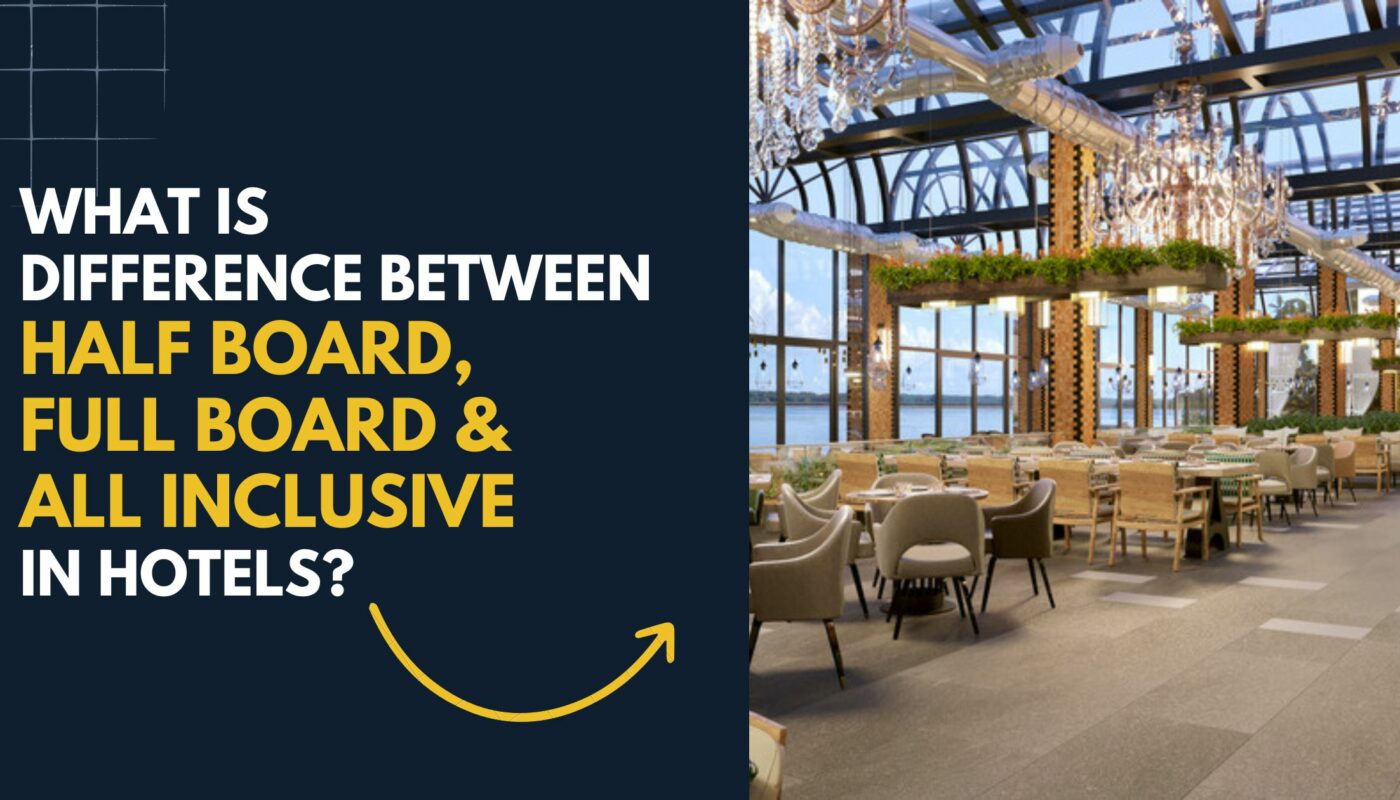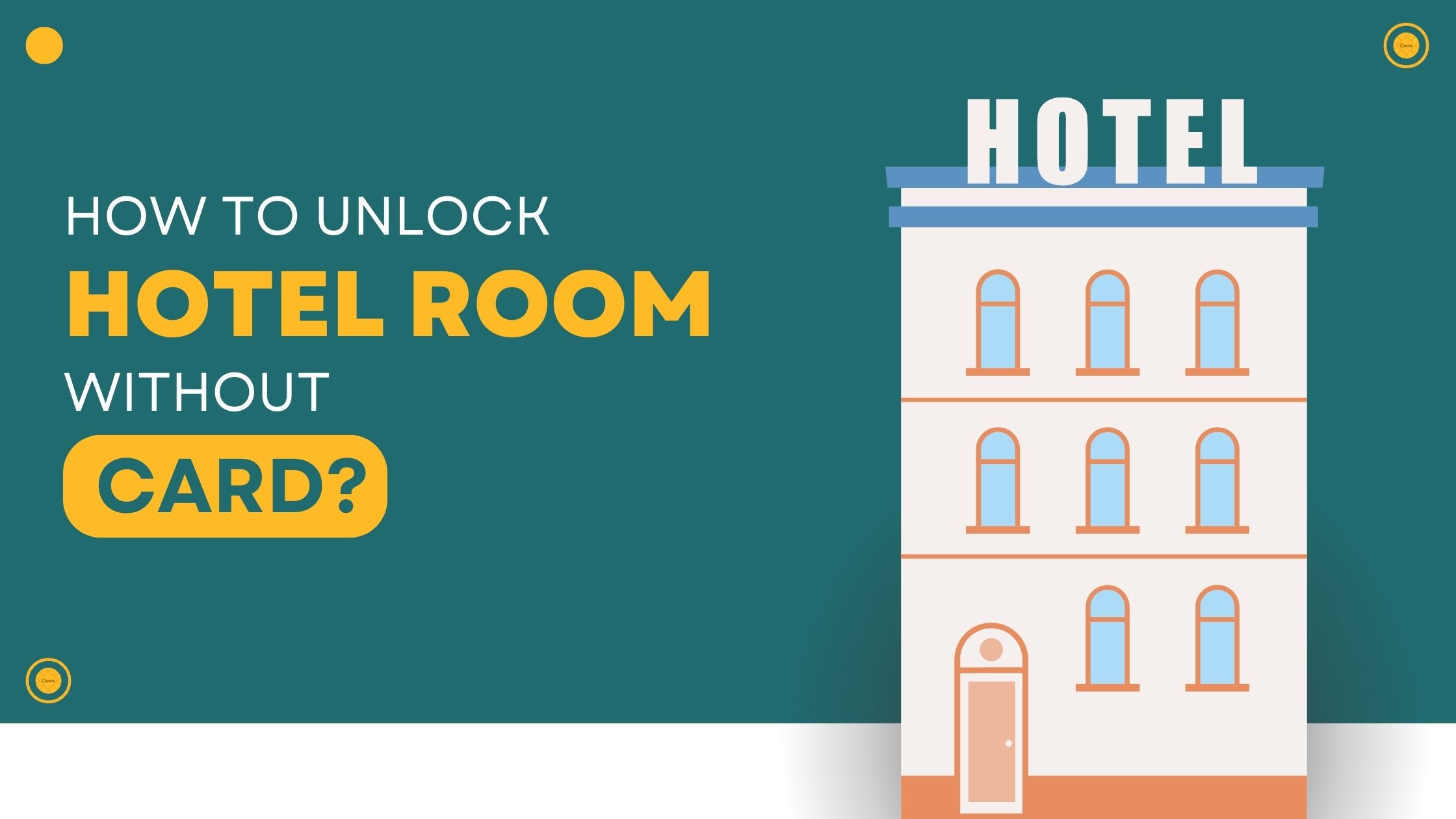When planning a vacation, one of the biggest decisions you have to make is choosing the right type of board for your stay. Moreover, what is the difference between half-board, full-board, and all-inclusive in hotels?
Choosing the right type of board can make or break your vacation experience. Each option comes with its own set of advantages and disadvantages, and it’s important to weigh them carefully. To help you make an informed decision, let’s dive into the differences between half-board, full-board, and all-inclusive in hotels.
What Is The Difference Between Half-Board, Full-Board, And All-Inclusive In Hotels?
Half Board includes breakfast and one other meal, usually dinner, at the hotel restaurant. Full Board includes breakfast, lunch, and dinner at the hotel restaurant, but drinks are not included and must be purchased separately. All-Inclusive packages cover meals, snacks, and drinks throughout the day.
Some packages may offer activities at an extra cost.
All-Inclusive is ideal for a relaxed vacation with abundant food and drink options. If you are on a tight budget and don’t need all the amenities, half-Board or full-Board may be a better fit.
If you want to save money, half-board or full-board may be the way to go. These options give you all your meals without the added expenses of an All-Inclusive package.
You can still buy snacks and drinks separately during the day with either plan. Hotel restaurants usually offer great food and service, no matter what meal plan you choose.
What Does Half Board Mean?

Half-board is a great dining option for travelers looking for a cost-effective way to save money on their vacation. With half-board, you get two meals – one being breakfast and the other either lunch or dinner – giving you a convenient way to keep costs down.
One of the main advantages of opting for a half-board is the flexibility it offers.
Many hotels are willing to adjust the meals to suit your individual needs, allowing you to switch from lunch or dinner depending on your personal preference.
Additionally, many hotels will even provide a take-out option for those going on long excursions, so that you don’t have to worry about missing out on a meal.
Furthermore, if you’re looking for a cost-effective way to save money during your vacation, half-board can be a great choice.
With this dining option, you can enjoy two meals while still saving money – making it an ideal solution for travelers who want to stick to a budget without compromising on quality or variety.
What Are The Benefits Of Half Board?
The benefits of half-board include convenience, as guests do not have to worry about finding a place to eat for at least two meals a day. It can also be cost-effective, as the price of the meal plan is often lower than the cost of purchasing meals separately.
Half-board can also provide a chance to try new cuisine and enjoy a variety of dishes without having to leave the hotel or resort.
Get To Try The Best Of Local Cuisine:
Half-board allows you to explore the city and try out different restaurants for dinner. You can get a taste of the local cuisine without having to pay full price or worry about spending too much on food.
Enjoy More Options At Meal Times:
Instead of being restricted to only one restaurant, half-board gives you the freedom to choose between multiple options. Whether it’s breakfast, lunch or dinner, you can find something that suits your tastes and dietary requirements.
Take Part In Hotel Activities:
Half-board packages often include access to certain amenities and activities, such as swimming pools and fitness classes. This is a great way to make sure you get the most out of your stay.
Save Money On Your Meals:
Half-board is a great way to keep your food costs down. By having breakfast and dinner included, you can save money on full-price meals and enjoy delicious food without breaking the bank.
What Does An All-Inclusive Resort Include?

All-inclusive resorts offer a range of accommodations suitable for couples, families, and groups of varying sizes. These accommodations may include standard rooms, and luxurious suites with various amenities, including bars, and scenic views. Depending on your budget and preferences, you can find the most suitable option for your stay.
All-inclusive resorts typically provide guests with meals, including breakfast, lunch, dinner, and snacks, along with a range of beverages like beer, wine, and cocktails.
Some resorts also offer unique dining options, such as beach barbecues and gourmet restaurants featuring international cuisine.
During your stay, there are various activities available including water sports, beach games, dance classes, and cultural experiences.
Additionally, many resorts provide live entertainment such as shows and music for relaxation after a day in the sun.
Some all-inclusive resorts provide additional amenities that set them apart from others. These may include spas offering various treatments, fitness centers with yoga classes, and fine dining options or special events such as wine tastings or cooking classes.
What Are The Benefits Of All-Inclusive?
The benefits of all-inclusive vacations include convenience, as everything is included in the price, making budgeting easier. There is also the added benefit of not having to worry about carrying cash or credit cards around. Additionally, all-inclusive packages often include activities and entertainment.
What Is Included:
All-inclusive typically includes accommodations, meals and snacks, drinks, recreational activities, and entertainment.
Depending on the resort or hotel you choose, you may also have access to a spa and other amenities.
Activities:
There is usually something for everyone at an all-inclusive resort or hotel. Activities may include sports such as volleyball, golfing, tennis, kayaking, and more.
You can also enjoy poolside activities like lounging in a cabana or swimming in the pool. For kids, there are special activities such as arts and crafts or music lessons.
Food and Drinks:
The all-inclusive package usually includes three meals a day plus snacks and drinks throughout the day.
Depending on your resort you may have access to a wide variety of restaurants, buffets, and bars. Drinks are usually included in the package and may range from sodas to cocktails.
Savings:
An all-inclusive vacation can save you money in the long run because everything is already bundled together. You don’t have to worry about budgeting for meals, activities or drinks which can add up quickly when paying separately.
Plus, with no tipping required, it’s even easier to stay within your budget and still enjoy yourself.
What Does Full Board In A Hotel Mean?

Full-board is convenient and offers value while traveling. The room rate includes all three meals and sometimes snacks and drinks throughout the day. This can save money and is great for those on a budget. Having all meals provided also makes it easier to stick to the diet.
Full-board meal plans are often the most cost-effective option when staying in a hotel, when compared to other meal plans.
It’s worth noting that depending on the hotel, there may be package deals that offer additional savings when booking all meals.
Making a full-board reservation has benefits beyond being economical and convenient. You’ll get to enjoy different meals each day, keeping your selections varied.
Plus, you won’t have to find restaurants or order takeout during your vacation – the hotel’s kitchen staff will provide all your meals.
When selecting full-board accommodation, guests can expect to have access to the hotel’s range of amenities, which can vary depending on the specific hotel and package selected.
For those seeking a combination of convenience and good value, full-board is a recommended choice.
What Are The Benefits Of Full Board?
The full board provides the convenience of having all meals and accommodation taken care of, allowing for a stress-free experience. It also often includes additional services such as laundry and housekeeping. Full-board can be a cost-effective option for those who plan on staying for an extended period of time.
Since it eliminates the need to constantly eat out or prepare meals on your own.
Cost Savings:
Full-board packages often come at a lower cost than booking individual meals separately. This is especially true if you are traveling in groups, as many hotels and resorts offer discounts for larger parties.
Predictability:
Knowing that you have three meals per day already booked ahead of time helps to take the stress out of your vacation planning.
You won’t need to worry about finding something different to eat each day since the same menu will be served.
Time-Saving:
With full-board packages, you can enjoy your vacation without having to worry about cooking or shopping for groceries.
This saves you time and allows you to focus on enjoying your holiday instead of meal preparation.
Variety:
Most hotels and resorts that offer full-board packages have a variety of dishes available each day.
This gives you the opportunity to try different dishes and explore new flavors throughout your stay.
What Should You Consider When Booking a Half-Board vs. All-Inclusive Vacation?
Here are a few things you should consider when choosing between half-board and all-inclusive:
Flexibility
If you prefer to pick and choose which meals you want to eat, then a half-board package may be the way to go.
This way, you won’t be tied down to a particular restaurant or buffet and can explore the local cuisine as much as you’d like when dining out.
On the other hand, all-inclusive packages come with more structure and require more of an investment upfront.
Activities
An all-inclusive vacation usually offers a wide range of activities such as water sports, helicopter tours, horseback riding, and so on.
Whereas with a half-board package, these activities may not be included in your package and will require additional spending. Therefore it is important to consider what activities you and your family are interested in.
Types of Food Available
Half-board packages provide you with breakfast and dinner included, while all-inclusive packages offer a much wider variety of food options such as buffets, snacks, drinks, and more.
If you are traveling as a family and are more concerned with healthy food options, then the all-inclusive package may be the better option.
Budget
Depending on how much you plan to spend on meals during your vacation, it’s important to factor in whether an all-inclusive or half-board package is going to be the most cost-effective.
Generally speaking, an all-inclusive package will cost more upfront but can end up being cheaper in the long run.
On the other hand, a half-board package may be more cost-effective for those who are on a budget.
Why Is Full Board More Expensive Than All-Inclusive?
Full-board is more expensive than all-inclusive because it includes all meals and drinks, as well as other amenities such as room service, laundry, and sometimes even activities. All-inclusive, on the other hand, typically only includes meals and drinks, with additional amenities being available at an extra cost.
Full-board offers more convenience and luxury for guests, as they don’t have to worry about paying for additional services or activities.
Additionally, full-board may be offered at higher-end resorts or hotels, which tend to have higher operating costs and therefore charge more for their services.
Overall, full-board is a more comprehensive and premium option, which is reflected in its higher price point.
Is It Better To Go Full Board Or Half Board?
The decision of whether to go full-board or half-board ultimately depends on personal preferences and budget. Full-board typically includes all meals and some additional amenities; half-board typically includes breakfast and one other meal, usually dinner. The full board is more convenient for those who don’t want to cook meals themselves.
However, it can also be more expensive.
The half-board allows for more flexibility and can be a more cost-effective option for those who prefer to explore local cuisine or cook some meals themselves.
It is important to consider the specific offerings and prices of each option before making a decision.
What Is The Difference Between Full-Board And All-Inclusive?
The main difference between full-board and all-inclusive is the level of services and amenities included in the package. Full-board typically includes three meals a day but does not include any additional amenities such as snacks, drinks, or activities. All-inclusive, on the other hand, includes all meals, snacks, and drinks.
It often includes access to activities such as water sports, entertainment, and excursions.
All-inclusive packages are generally more expensive than full-board but offer a more comprehensive and luxurious experience.
It is important to carefully read the terms and conditions of each package to understand exactly what is included and what additional costs may apply.
FAQs
What Does All-Inclusive Plus Include?
All-Inclusive Plus is a package that offers more than the standard All-Inclusive package. It includes all meals and snacks, as well as branded drinks. Some hotels may also offer additional dining options and complimentary access to facilities. It is designed to provide guests with a more comprehensive and luxurious experience.
Additionally, all-inclusive plus offers excellent value for money. Whether you are looking for a relaxing holiday or an action-packed adventure, All-Inclusive Plus is a great option to consider.
Does Half-Board Mean All-Inclusive?
No, half-board does not mean all-inclusive. Half-board typically includes breakfast and one other meal, usually dinner. All-inclusive, on the other hand, includes all meals, snacks, and drinks. So while half-board may provide some meals, it does not cover all food and beverage expenses as an all-inclusive package would.
It is important to carefully read the details of any package to understand exactly what is included.
How Many Drinks Are Included In All-Inclusive?
The number of drinks included in an all-inclusive package varies depending on the resort or hotel. Some all-inclusive packages may include unlimited drinks, while others may have a limit on the number of drinks per day. Additionally, the type of drinks included may also vary.
Some packages may include only domestic beverages and others include premium brands. It is important to read the details of the all-inclusive package to understand what is included and any limitations.
Do You Get Free Alcohol With All-Inclusive?
It depends on the specific all-inclusive package you choose. Some all-inclusive resorts include free alcohol as part of their package, while others may only offer certain types of alcohol or limit the number of drinks you can have per day.
It is important to read the details of your all-inclusive package before booking to ensure you know what is included and what additional charges may apply.
Is Half Board Worth It?
Whether or not half-board is worth it depends on your personal preferences and travel plans. Half-board typically includes breakfast and dinner. However, not lunch, and can be a good option for those who plan on being out and about during the day.
However, if you prefer to have more flexibility in your meals or plan on eating out at local restaurants, then half-board may not be worth the extra cost.
Ultimately, it’s important to weigh the benefits and costs of half-board and decide what works best for your individual needs.
Which Meal Plan Should You Go For?
The meal plan that you should go for ultimately depends on your personal preferences and budget. A full meal plan typically includes all meals and snacks, while a half-meal plan may only include breakfast and dinner or lunch and dinner.
An all-inclusive meal plan may also include drinks and activities. If you prefer to have more flexibility in your meals and enjoy exploring local restaurants, a half or no meal plan may be more suitable.
However, if you prefer the convenience of having all meals included and want to stick to a budget, a full or all-inclusive meal plan may be the better option.
It is important to consider your dietary restrictions, the quality of the food, and the overall value of the meal plan before making a decision.
What Is Half Board Vs Full Board?
Half-board and full-board are two types of meal plans offered by hotels and resorts. Half-board includes breakfast and one other meal, usually dinner, while full-board includes all three meals: breakfast, lunch, and dinner. The difference between the two meal plans is the number of meals included.
Half-board is ideal for those who want to explore the local area and try different restaurants for lunch. Full-board is perfect for those who want to relax and enjoy all their meals at the hotel or resort.
The cost of each meal plan varies depending on the hotel or resort, the season, and the location.
Conclusion
In conclusion, choosing the right meal plan when booking your hotel stay is an important decision that can impact your overall experience. Half-board, full-board, and all-inclusive are the most common meal plans offered by hotels, and each has its own unique advantages and disadvantages.
By understanding the differences between them, you can make an informed decision that meets your budget and requirements.







